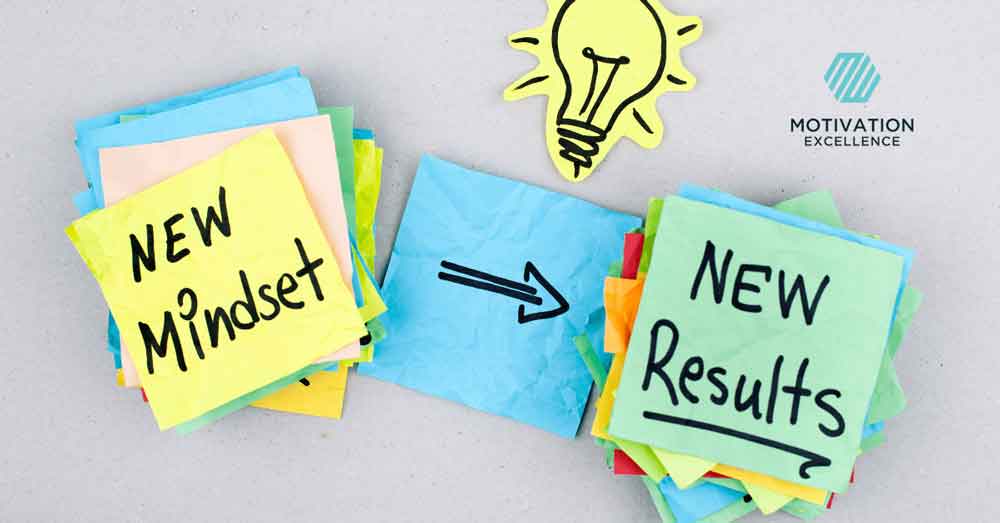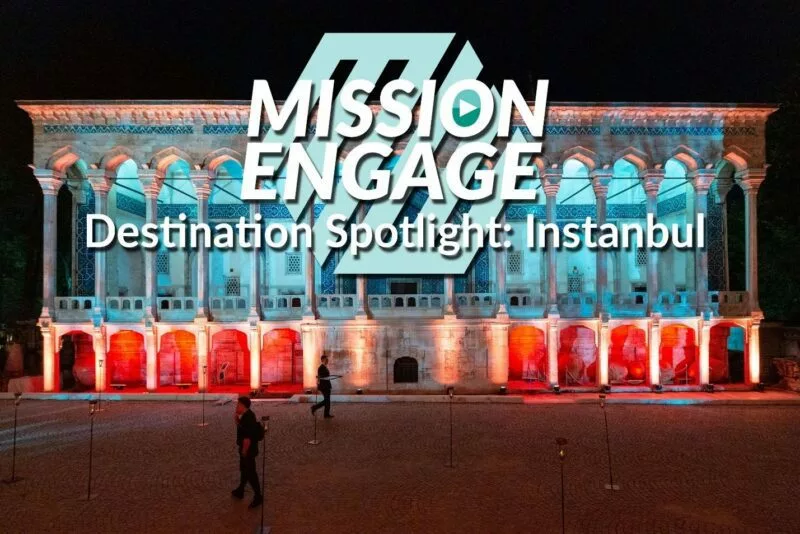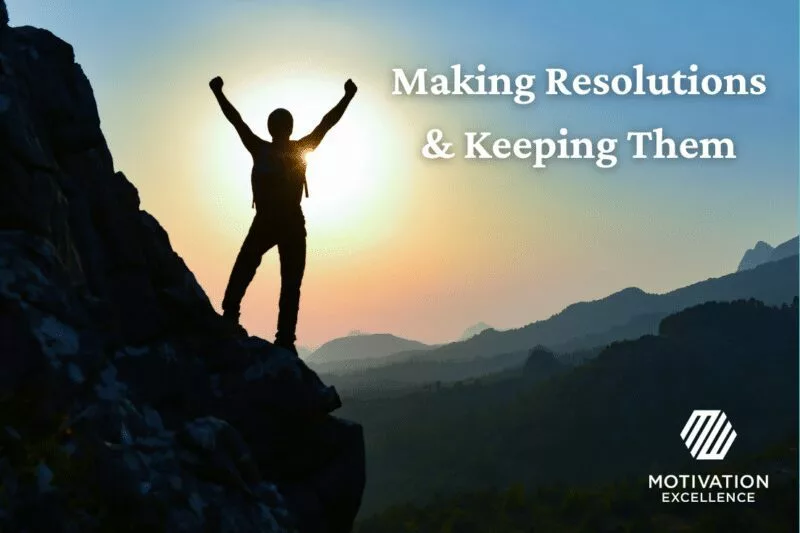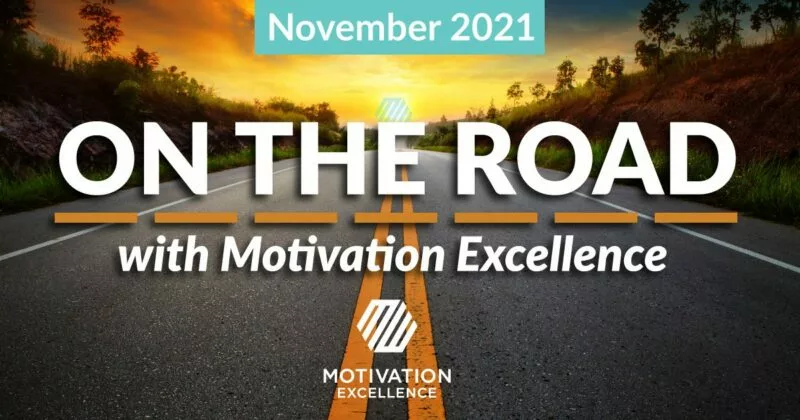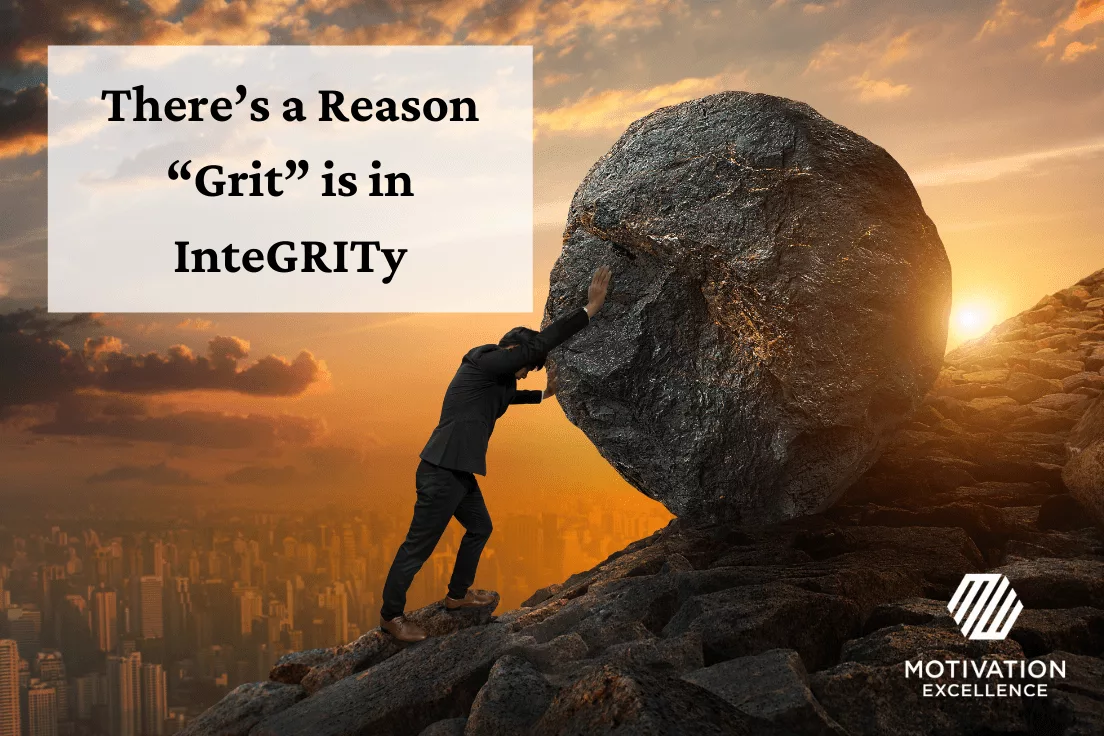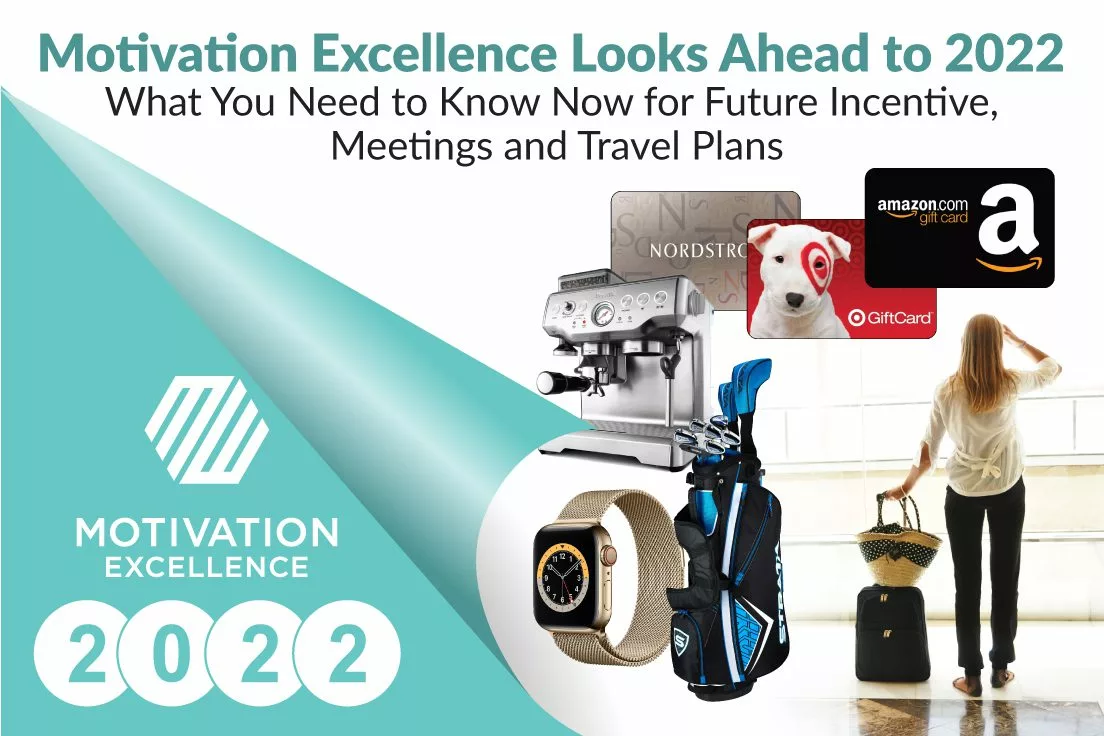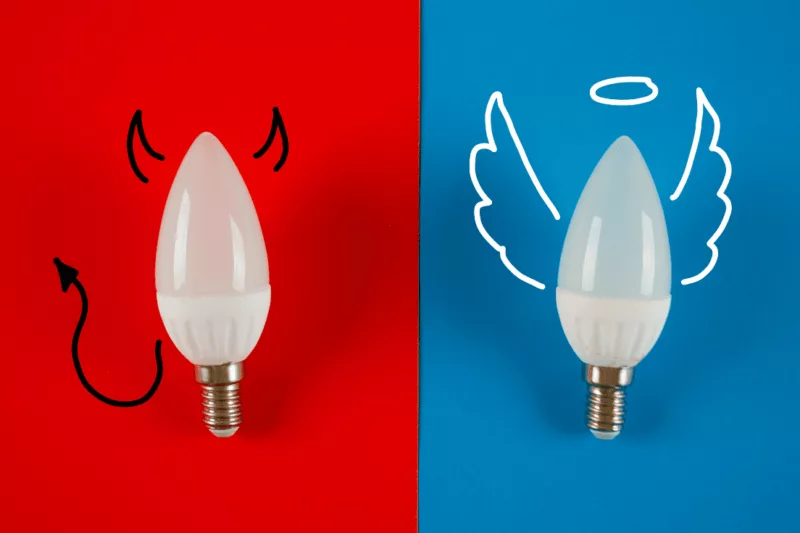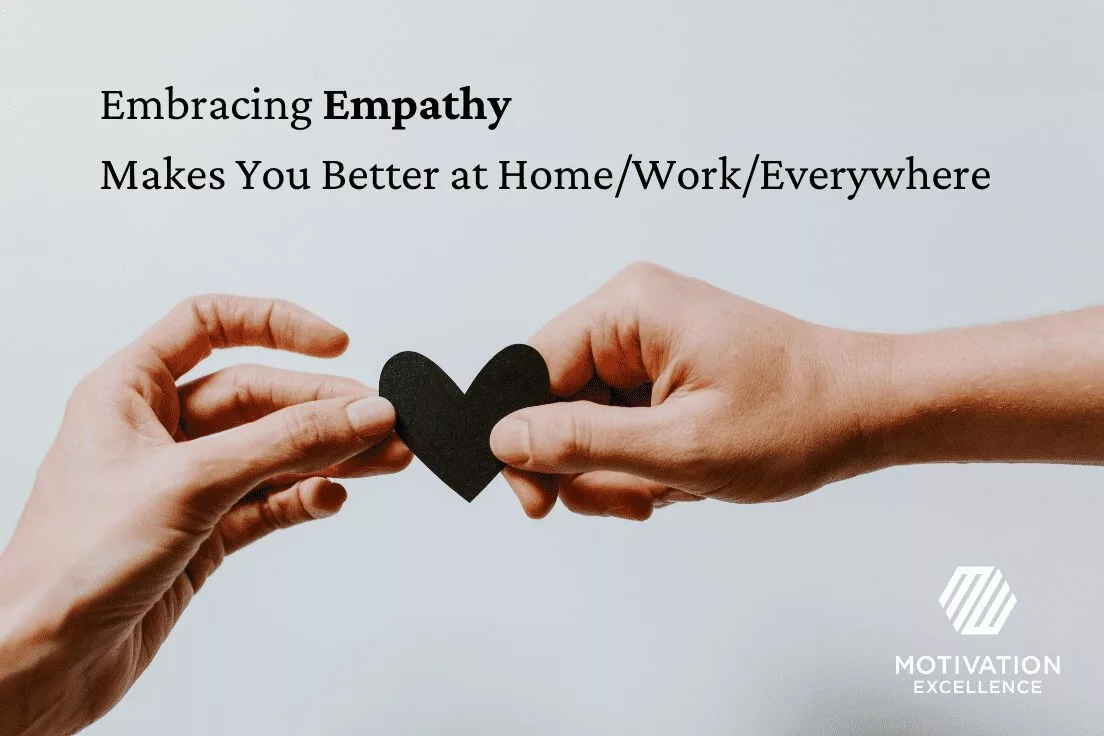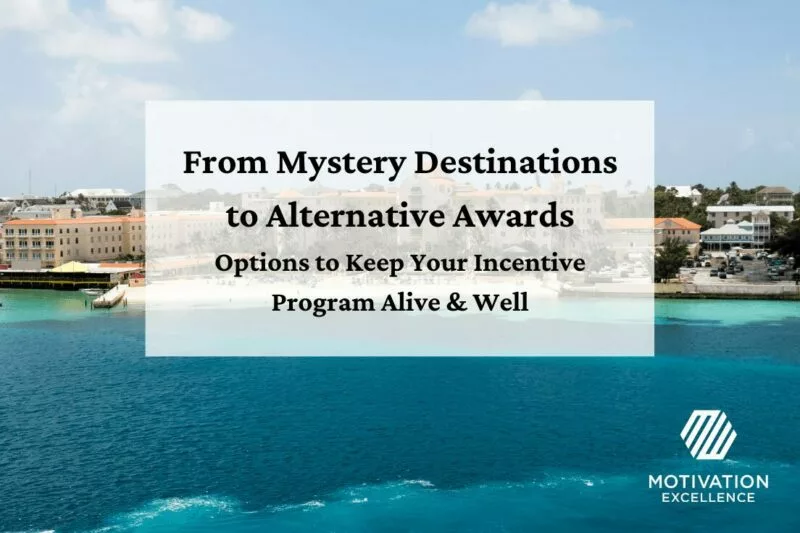Set Your Mind to Growth and See How High You Go!
Each month, we select a theme to help our readers learn more about a specific personal or professional topic meant to expand all of our horizons. This month, it’s no accident our theme is “growth mindset.”
Earlier in January 2022, we announced the acquisition of VIKTOR Meetings & Incentives. This too, was by no accident. Motivation Excellence CEO & President, David Jobes, made it very clear to all of us when he purchased the company in 2018 he planned on growing Motivation Excellence partially through acquiring other businesses in the industry. He set a plan, shared it, moved through obstacles, kept on course, and now here we are…growing!
Fixed versus Growth Mindsets
Someone with a fixed mindset gets stuck in the muck and can’t see around an obstacle. A growth mindset allows a person to see possibilities even when they can’t figure out the best way to reach them, yet. According to this Understood.org article, people who are set on growth reframe challenges and are motivated to improve.
Entrepreneur.com reports that people who believe they can reach their goal look at failures as opportunities and thus catapult themselves forward even when others in the same situation crawl back under the sheets and go back to sleep. They offer 10 steps to achieve a growth mindset in business, which include becoming an expert in what you love, not being concerned with what others have, and being 100% accountable.
Cultivating a growth mindset is not always an easy task. If you want to start on that journey, you’ll need support. Here’s a tip: be a learn-it-all, not a know-it-all. That’s right, lifelong learning is critical, and lucky for you, we wrote about that too.
Forbes explains in their article why a growth mindset should be part of your business strategy. They offer three actions to encourage such a mentality. Number one? Foster continuous learning. Here’s the reason: people who accept they have more to learn, search for more education. Those who feel like they already know everything, have nowhere to go but horizontally – ever seen a flower that grows parallel to the ground? It’s pretty rare; they must embrace a growth mindset!
Go, Go, Grow
The Growth Institute says mindset is the number one predictor if a business will scale into success. Leaders who encourage a growth mindset attract teams of proactive, accountable, and motivated solutions-seekers. They offer several ways to nurture a go and grow mentality, like embracing change, being self-aware, and having perseverance.
Carol Dweck is the original source of the mindset theory. In her book, Mindset, The New Psychology of Success, she posits that success is more about a person’s outlook than intelligence and talent. Of course, motivation, gumption, and level of support help play a part in someone’s ultimate success, but an individual’s attitude can be a boost of fuel or a nail in a tire right from the word go.
How do you best foster growth in your personal or professional life? Comment on whichever social feed you read this blog, so we can share experiences and learn together. That’s another important factor in a growth mindset: being open to discussion.
Destination Spotlight: Istanbul
If these attributes sound good to you
- Center of the world
- Easy access
- Something for everyone
- Comfortably exotic
then keep reading for more information on our Motivation Excellence destination spotlight on Istanbul! You can also see for yourself some of the beautiful and unique venues perfect for hosting your next meeting or travel incentive by watching a roughly 15-minute webinar hosted by destination management company MEP.
Istanbul straddles both European and Asian continents! It’s the most connected city in the world as far as air travel goes, and is full of ancient history and modern wonders. The lifestyle and business environment is very Westernized, making it “comfortably exotic” for Americans to visit according to MEP Managing Director Eda Ozden.
Keep reading for a summary of why Istanbul should make your next list for future travel.
Venues
Options here range from events in cisterns more than 1,600 years old to modern art museums. The Ciragan Palace Kempinski Hotel is an actual Ottoman palace operating now as a 5-star luxury hotel. The brand new cruise port and waterfront complex offers many new venue options. From old to brand new, Istanbul has it all covered.
Group Size
The perfect group size for a personalized visit is up to 150 people. Although there are many venues and hotel options that can accommodate much larger groups, Ozden recommends capping the attendance to keep the experience more meaningful and individualized.
Food
While you may think of kabobs as the best-known Turkish cuisine, in truth you’ll find food from many different influences in Istanbul. As a Mediterranean country, fresh fruit and veggies are popular, along with olive oil, yogurt and hummus dishes. Russian staples, Steak houses and pizza restaurants are also plentiful.
Best Season
While both fall and spring are preferred times to visit, the summer offers great weather and the best pricing options since it’s the off-season for business travelers. Istanbul does get occasional snow in the winter months, but nothing compared to the Midwest and East coast of the United States.
If you’re interested in learning more about Istanbul or Turkey, please connect with us! You can email ME@MotivationExcellence.com or reach out directly to our VP Travel Brad Hecht at B.Hecht@MotivationExcellence.com.
Look for more destination spotlights coming in 2022!
Making Resolutions & Keeping Them: Your Guide to Starting the New Year Off Right
Whether you are a New Year’s Resolution person or not, the end of one year and the beginning of a new one tends to make us reflect on what we’d like to change going forward. What can we be better at? What can the turning of a new year bring that we didn’t have in the past year?
The stats on resolutions aren’t horribly impressive, however, keep this mind: according to verywellmind.com, people who set resolutions are ten times more likely to achieve behavior change than those who don’t. In the Forbes article about how to keep your New Year resolutions, it’s reported 19% of people who make them actually stick to them.
Perhaps you’re motivated by beating the odds? Well then, making and keeping a New Year’s resolution is for you!
Making a Resolution
Resolution is really another word for goal. Aiming for a better body, salary or lap-time is natural and entirely human! How often do you wake up each day and think about the one or two (or dozen) things you need to get done? Perhaps at the start of a month, you mentally tick off items you don’t want to push off until the last minute.
As you can surmise, we make resolutions quite often. Declaring your intentions is the easy part. Fulfilling them is where things get tricky. There are ways you can help yourself to achieve your goals though (we have a whole blog on goals you can read here too).
- Make small goals that build up to something bigger
- Be very specific and realistic
- Pick one or two goals at a time
- Write them down and track your progress regularly
- Don’t wait for a special day of the year, month or week
Keeping a Resolution
There are a plethora of reasons why we tend to fail at keeping resolutions.
- Lack of motivation
- No accountability
- Poor time management
- Not truly serious
- Get bored
- Lack of daily dedication
Despite the above reasons, Psychology Today reports goals are important to growth, direction and happiness. If you can map out the why and the how of your resolutions, you can create a path that avoids the common pitfalls. Just saying you want to lose weight doesn’t make it happen. Here is an example though of how you can meaningfully prepare to make that your resolution AND see it through.
Resolution: Lose Weight
Mini goal: Lose 5 pounds in 5 weeks
Tracking: daily calories and exercise minutes
Motivation: pick a pair of pants you want to fit into – hang them up as a reminder
Dedication: work on it daily
Accountability: Share your resolution with trusted people, have them check in with you
Losing one pound a week is likely a goal that is attainable for most people with the proper diet and exercise structure. The resolution is reasonable in other words (check with your doctor to be sure). And we’ve given ourselves a way to track, motivate, and be held accountable. Once you’ve put all that effort in (OK, it’s not that much effort really), you have already dedicated yourself to the ambition at the very least. After that, it’s just one day at a time!
Maybe, reading this blog was your first step to tackling your next goal…we love to be helpful like that. Good luck!
On the Road with Motivation Excellence: November 2021
Things are changing quickly when it comes to travel. At Motivation Excellence, our goal is to keep our followers and clients informed on the latest protocols, trends and tips. In our On the Road series, we’ll highlight our own travels for leisure and business, as well as report on current client trends in the incentive industry. Look for the latest On the Road post at the end of each month. If you ever have travel questions during this uncertain time please reach out to us at ME@MotivationExcellence.com.
In November, an industry event brought thousands to Las Vegas and one of our travel planners visited Portugal. Read below for the highlights and takeaways from our travelers.
A Family Getaway in Portugal
Traveler: Joe Reise, Manager, Supplier Relations & Sourcing
During a recent visit to Lisbon, Sintra, and Porto, Portugal, I was able to enjoy and explore one of Europe’s most fascinating countries with two of my sons, Trevor and Max. Lisbon is continental Europe’s oldest capital city and offers much in the way of historical sightseeing, distinctive hilly neighborhoods, and excellent and interesting seafood choices. The people are very nice too! One of the coolest things we did was visit The Padrão dos Descobrimentos on the edge of the Tagus River (see middle picture). You can go to the top and view the city from there.
Just 30km away from Lisbon, we enjoyed the city of Sintra, classified as World Heritage by UNESCO. It’s considered to have the perfect symbiosis between nature and its built heritage. The town has been adored over the years by artists and writers from all over the world. We visited the medieval palace called Palácio da Vila (see picture on the right). It’s one of the few medieval palaces in the world that survives to this day practically intact.
Finally, in Northern Portugal, we enjoyed Porto, another World Heritage site. We did a walking tour and visited a palace, a cathedral and St. Francis church. The architecture and history here are stunning. We ended our tour with an unbelievably beautiful and relaxing river cruise on the Douro River, one of Europe’s most scenic rivers. Of course, you can’t visit Porto without tasting some Port wines. We did a tasting at Graham’s and found the offerings exquisite!
Key Takeaways:
- Negative RT-PCR test within 72 hours of departure was required by the airline, Portugal and the U.S.
- We needed to fill out a Portugal Locator Card prior to landing with itinerary and vaccination status
- Portugal is a great value for international travel
- Lisbon is a global city with lots of attractions, including 290 days of sun
- November is a great time to visit – mild weather and fewer tourists in the off-season
The Travel Industry Gathers Again
Travelers: David Jobes, President & CEO, and Brad Hecht, VP Travel (our writer)
I have been traveling a lot since January and have seen the mad rush of travelers…..everywhere! I was in Las Vegas again in November and stayed at multiple hotels (Delano & Aria) for an industry (IMEX) convention and had meetings with key worldwide suppliers, and also had a client attended site-inspection.
Well I can say, yes, it was as crazy as ever, busy as ever, electric as ever. The convention attendance was far better than I expected, with around 11,000 attendees as I last heard. Yes, I can say that everyone had to be fully vaccinated to attend the show, and masks, once inside the show were optional. About 90% of the attendees elected not to wear them.
Service levels were better than expected and I am seeing some normalcy! Every restaurant was packed for lunches and dinners. I was happy to see the crowds and the excitement in the air. We are hopefully turning that important corner we have been waiting to see for about the past 18 months.
Key Takeaways:
- Las Vegas is hopping, fun and energized
- Vaccines, hand sanitizer and masks are among popular COVID protocols with big conventions
Coming Up Ahead in December:
- A vacation to Turks and Caicos
- A Leadership Forum in the Dominican Republic
- Family fun all around the country
- Our Motivation Excellence Holiday Event
Buckle up and enjoy the ride with Motivation Excellence as your guide!
There’s a Reason “Grit” is in Integrity
Integrity is a heavy word, as in, not to be thrown around lightly. At the same time, it elevates the possessor high above the crowd. You see, when someone is described as having integrity, it means this person also possesses a myriad of other meaningful and weighty attributes. They’re reliable, accountable, honest, ethical…the list goes on to encompass everything you’d want to see in someone you respect. Each trait is like a step taking that person up to the pinnacle of personal adjectives: Integrity! (Cue the triumphant trumpets!)
Make It a Core Value
We love integrity at Motivation Excellence. It’s part of our core values: Respect, Integrity, Trust and Exceeding Expectation, or RITE2. When we developed these, the executive team spelled out exactly what integrity meant to them.
Integrity: Respect for lawful operations, mindful work, honest actions, honest words, correcting & learning from mistakes, accurately representing our services, being true to yourself, providing thought leadership, giving your best effort every time, quality work, not giving in to haste.
When you look up the word integrity, you will often come across some version of this saying: “Doing the right thing, even when no one is watching.” While that is a great sentiment, don’t you think sometimes it’s even harder to do the right thing when there are people watching (you know, for those who succumb to peer pressure, for instance)? That’s truly when a person of integrity can shine. Maybe that’s why the word “grit” is firmly in the middle of integrity – grit means you have the courage and resolve to stick to what’s right, no matter who is watching.
Anyone Can Have Integrity
A Mindtools.com post about integrity says those who have it are more likely to be promoted at work. The values of responsibility, humility and keeping promises are highly sought after in leaders. How do they say you go about securing and preserving your own integrity? It’s all about the choices you make. We each make many every day that can impact our personal values, as well as those of our business and family. Once you define what’s important to you, analyze your choices against those to keep you on a consistent path. If unparalleled customer service is a core value for your company, then each decision that’s made needs to reflect that from the president down the ranks.
The best part of integrity is anyone can possess it! You don’t need to be a CEO. You can be a kindergarten teacher, a stay-at-home mom, a little league coach or church pastor and anything else! As long as you hold yourself to the highest standards of ethical, moral and honest actions, and throw in accountability, responsibility and trustworthiness, you’re working with the right ingredients to achieve INTEGRITY!
Motivation Excellence Looks Ahead to 2022 – What You Need to Know Now for Future Incentive, Meetings & Travel Plans
By now, we’re used to the rocky road. We’ve adjusted our shocks and readily brace for the bumps, tight turns, and hilly climbs. There’s good news up ahead as our industry continues to recover from 2020, but likely, it’s not fast enough for most. Patience is key, along with innovation, flexibility, and timing.
I chatted with members of our executive team covering travel, program design management, and sales. We’re happy to share our insights with you as you look at 2022, and beyond. President and CEO of Motivation Excellence, David Jobes, is hopeful for a smoother ride in the coming year.
“We are excited to have incentive travel and meetings and events starting to operate again the last quarter of this year, as well as a very busy 2022. I’m sure there will be a few adjustments along the way, but our clients are excited and prepared to start getting together again with their customers and employees. Our advice is to be aware of current situations in the destination you will be traveling to and keep in contact with your expected travelers to gauge their expectations.”
Air Travel
Air traveler numbers certainly indicate an uptick in consumer desire to fly this year over last year, with that trend expected to increase in 2022.
On November 14, 2021, the TSA reported 2,150,150 air travelers. This is up more than double from 2020, but still a bit below the 2019 number of 2,396,681. Domestic air travel is expected to increase in these last 6 weeks with holiday travelers taking to the sky once again, with the New Year poised to continue the bustle. The International Air Transport Association (IATA) predicts 2022 will see air travel demand get to 61% of pre-pandemic levels. 2021 was at 40%.
The New York Times reported that more than 200,000 international travelers from more than 30 countries previously banned from entering the United States due to COVID policies, poured in on Monday, November 8 – the first day coronavirus restrictions were lifted. However, international travel still is lagging for understandable reasons. For comparison, a typical day in 2019 saw more than 371,000 international travelers arriving in the United States.
Even with International travel opening up, the likely trend will be to stay closer to home for business initiatives. While we do have programs planned for Thailand, Mexico and the Caribbean in 2022, domestic destinations are on the schedule and less likely to change due to coronavirus mandates and concerns. Brad Hecht, VP Travel, says size of group, time of year, and distance for travelers should all play a factor as you decide your tolerance for travel in 2022…and realistically speaking, 2023.
“Companies are just now starting to ease the caution flag and focus on travel rewards again. There are domestic and international destinations that provide a safe environment for their guests. Now is a great time to get something in place for 2022, if space allows. Really, you should be looking at 2023 too, and the early bird will get their requested space. The compression of space from the last 20 months pushed groups out to future dates and the full selection has been reduced somewhat.”
Meetings and Events
Earlier in November, our industry welcomed IMEX America back after a two-year hiatus. Travel, meeting, and event planners and partners were excited to be together in person and discuss a more robust future. The road ahead may be a bit slow, however.
According to a report in a recent Meetings.net post, two-thirds of 500 meeting planners surveyed expect their 2019 meetings schedule to be back by the second quarter of 2023…more than a year away from now. Planners also reported that 40% of their meetings in 2022 will be all in-person, another 40% will have a virtual component and the final 20% will remain totally virtual. The good news here is advances in tech and event planners’ knowledge of how to best use it has increased substantially since 2019!
Cvent, C&IT, and Third Sector published their findings after a recent “Big Questions Live” event in the U.K. on the future of the events industry. Their participants agreed that flexibility, technology, and human connections are critical components to successful events. When they discussed localized meetings and hybrid events, they chose to highlight the sustainability aspect of not flying people across the world. Planners now need to have contingency plans, embrace the additional data they acquire from virtual settings and design human connection into everything.
Something we’re seeing right now with clients is a desire to gather but within a short time period. Rhonda Brewer, VP Sales, says there are some great advantages to this.
“We are also seeing more last-minute meetings pop up as businesses determine they need to get their teams together. These do create a lot of work very quickly but it also provides the opportunity to get great last-minute value at great hotels with openings. It doesn’t allow for a lot of options or changes, and decisions do have to be made quickly in order to secure space, but if you can be flexible it’s a winning solution!”
Alternative Awards
As we’ve mentioned, flexibility is key to sustaining a rewards and recognition program when travel is not always a certainty. Northstar Meetings Group conducted a survey in late October that showed alternative awards will continue to thrive in 2022. Gifts and gift cards are the most popular alternative awards to travel.
The Incentive Research Foundation just published a paper on the Psychology of Points. In their online survey of more than 1,000 employees, they found that on average, respondents who work for a company with a rewards and recognition points program in place, had:
- Higher intrinsic motivation
- Higher employee engagement
- Greater satisfaction with their rewards and recognition
- Greater preference to continue working for an employer who offered a points program
We’ve found participants in our programs who shifted to alternative rewards, or started out that way in the first place, are highly satisfied with the personalized reward experience.
“As for incentives with alternative awards to travel, this has continued to be strong and was significant during the pandemic. Being able to offer award points in lieu of incentive travel has been extremely well received and gave attendees the opportunity to shop for very personal needs such as replacing windows, or providing for a child’s private education. In addition, lifestyle types of gift packages such as whole-home entertainment systems, home fitness packages, or small kitchen appliance refreshes have been awarded and will continue to appeal. These have also worked well for quarterly spiffs,” Brewer reports.
For a more detailed look at alternative reward options please read our white paper From Mystery Destinations to Alternative Awards Options to Keep Your Incentive Program Alive and Well.
Get Started
While we obviously don’t know exactly what the future will hold, we do know the sooner you start, the better off you’ll be in the long run. Whether you’re planning future incentive travel, a meeting or customer event or some type of loyalty or reward program, the first step is deciding what it is you want to accomplish. Motivation Excellence is here to help.
When you look at the goals you want to achieve with a program or event, also look at the audience and the budget parameters. Bob Graham, VP, Client & Technology Solutions, says things get a little tricky now when looking at historical data to help fill in details.
“For both employee and customer initiatives, we have to remember we don’t have reliable baseline information anymore. Customers may be gone or new ones have stepped in over the pandemic time frame. Employees are a scarce resource base in some industries.”
Graham says secondary information can help support the initiatives to rebuild engagement, loyalty and future growth. He says you can look at this time in history as a positive for your business goals.
“Customers need more support than ever before. It is an opportunity to step in and be that support. Training, supply chain issues and labor shortages are a challenge for a lot of industries, and a program right now could be the difference between building loyalty and growth and being stagnant.”
Having a trusted partner to help guide you through all the twists and turns of our COVID-infused world is critical. Reach out to us at ME@MotivationExcellence.com with any questions you may have about renewing your stake in the travel, meetings and incentive landscape. We can ride shotgun and steer you around the obstacles we’re so familiar with now. Who’s ready to ride?
Don’t Be Scared of the Devil in the Details – Instead, Find an Angel to Help
Ever heard of the saying, “The devil’s in the details?” If you want the “deets” on how it came to being be sure to check out this link. The gist is that even though elements of a plan may seem small and insignificant, each one has the ability to foil the overall results – what a little devil!
You’ve probably heard the saying by author and psychotherapist Richard Carlson, “Don’t sweat the small stuff…and it’s all small stuff,” but don’t confuse details as the “small stuff.” Carlson was referring more to emotional small stuff – annoying habits by coworkers, a rude customer or an inconsiderate driver causing stress, anxiety and anger.
Details can be small – minute even – but in business they each have an important place in the overall picture. Think of all the tiny particulars that go into a space launch at NASA (or any of our new private space exploration companies). Those details are life and death important. The latest project you’re working on might not have that extreme level of mortality, but you get the point; a missed piece of the puzzle can make creating the big picture impossible.
Find Your Angel
There are just some people who pay attention to detail much more keenly than others. You know the ones: they love to “find the differences” in two photos or can’t wait to look at a “Where’s Waldo” puzzle – it’s fun for them to investigate complex pictures and discover what’s out of place. If you’re not one of those people, be sure there’s one on your team!
At Motivation Excellence, we thrive on details for our clients whether it’s for an incentive travel experience or a customer engagement solution. Recently we had a new client, who we set up with a customer loyalty program, tell us how he appreciated our attention to all the “tedious tasks” that would’ve taken him years to get through. He went on to say, “It’s nice to have a hands-off program where you all take care of what needs to happen day to day and I chime in here and there where needed.” Can we get a “Hallelujah!”
Inside our own organization, we have people who specialize in different areas of detail work. When looking at a proposal for a client, it goes through many sets of eyes before being presented. Some of us catch spelling errors at first glance, others thrive on budget anomalies, still others go over the graphics and question whether they make sense…it’s a team effort when it comes to making sure all the details line up for a great solution. The presentation, after all, tells the story and shows how much we care about how it’s told.
Be Brave
As a leader in business, it’s critical to have a handle on the elements that create the big picture. If you’re not detail-oriented, don’t fear the devil too much. There are tips you can use to increase your abilities. The Dream Catcher website outlines how to become more detail-oriented. Paying attention to all facets of a project shows you care, but you don’t want to micromanage either. It’s a fine line – walk it safely.
ThoughfulLeader.com describes finding the balance between wasting time on seemingly unimportant details and losing business to sloppy work. It really comes down to being able to prioritize and delegate. If you really want to dive into how to prioritize, Zapier.com has nine scientific ways to do it. Maybe just skim it over to see if one of them will work for you.
A Detailed Summary
Well, it’s not too detailed, but if you are a quick reference type of person, we’ve got just enough details here to quench your thirst. In short, details matter, however, you don’t need to be in charge of all of them or any of them if you have a trusted team at your side. You can be the big picture person – every organization needs them too!
Here is a quick list of getting started on conquering the details. Use it before your next big project leaves your hands.
- Know your own detail-orientation level
- Find your detail angels – they are real!
- Allow time to have several people review the work
- Present to a third party before a client – do the details add up to the big picture you intended for your best friend or spouse?
Good luck! We’ve given you the basics to work with the devil and the angel on your shoulders – they’re both there to help you conquer the small elements so your big picture shines through!
Embracing Empathy Will Make You Better at Home/Work/Everywhere!
Photo credit: Kelly Sikkema / Unsplash
Can you feel it when there’s tension or frustration filling a room of your coworkers? Does hearing about a stranger’s brush with inequity rile up your anger? When your friend cries in front of you, do you tear up too? These are all examples of empathy, and no, not everyone can relate strongly to these examples, but to be a more successful person, growing your empathy reaction is important.
6Seconds.org will tell you that empathy means experiencing someone else’s feelings, while sympathy means understanding someone else’s feelings. It’s about tapping into your emotions rather than your brain. There’s a long distance between the two, but both have solid places in our society.
For a quick, and funny illustrated example, watch this Brené Brown video where she describes how using empathy helps create connections, while sympathy doesn’t.
How Empathetic Are You?
Empathy is a widely studied trait! According to GreaterGood.Berkeley.edu, research suggests that empathetic people lean toward being more generous, concerned about others and have happier relationships. They also tend to be better leaders and communicators. You can take the GreaterGood quiz (less than 30 questions) to see where you land on their empathy scale. This will give you a good read into where you can improve.
Not only does being empathetic help make you a better friend, it’s important to flex this skill at work too. TheBalanceCareers.com states a 2020 State of Workplace Empathy Study by Businessolver shows workplace empathy has stalled. The percentage of people (68%) who felt their organization was empathetic is the lowest in four years. 76% of respondents said an empathetic workplace inspires more employee motivation and 82% of CEOs say it has a positive impact on performance and productivity!
Becoming More Empathetic
The good news is you CAN LEARN to improve your empathy! (Really anyone can, it’s just naturally harder for some, especially if you have a medically diagnosed personality disorder.) This is great news since we know being more empathetic can lead to better relationships at home and at work.
There are many articles out there about habits you can incorporate to boost your empathy quotient. Be sure to visit some of our past blogs on EQ, Broadminded Thinking and Self-Awareness for similar tips for improvement.
Among the most commonly suggested ways to improve your empathy:
- Be an active listener & sharer
- Read fiction – it helps you step into someone else’s shoes
- Experience new things like travel, food and activities
- Be open to giving and receiving feedback
- Smile and use people’s names in conversation
- Learn about a different viewpoint and ask the why behind it
- Talk to strangers in safe environments
- Question your assumptions and judgements of others
As another GreaterGood.Berkeley.edu article suggests, we learned a lot in the 20th century about introspection. This century might well be best spent looking at how we connect with others to grow an even greater knowledge of the human experience.
One thing is for sure, people will remember how you make them feel and being more empathetic is a key way to make them feel heard, supported and uplifted!
Going for Gold; How Regular Recognition at your Company Makes Everyone a Winner
The 2020 Summer Olympics (held in 2021) just wrapped up and I’m sure you can still see the gleaming faces of medal winners on the podium. That’s the ultimate recognition; winning a gold medal in a sport you’ve trained in and persevered through! Obviously, for most of us, that’s not a realistic attainment, but even a gold star can turn someone’s day around for the better. That’s the brilliance behind recognition. It doesn’t have to be an all-or-nothing gesture. There are many degrees between a pat on the back and promotion to Vice President of Awesomeness (if that’s not a title, it should be)!
Motivation Excellence offers a wide variety of ways to recognize and reward important people in your business structure from employees to valued channel partners. In this blog, we’ll outline why having a recognition strategy in place is so important. Visit our website or reach out to ME@MotivationExcellence.com to learn more.
It’s About Trust, Motivation and Connection
Would it surprise you to hear that employees who receive recognition from their superiors actually trust their boss more? In this linked Forbes article, 90 percent of employees surveyed indicated higher levels of trust with the “higher-ups” if they had been commended for something in the past month.
The Society for Human Resources Management (SHRM) reported that when employees feel their work leadership appreciates and recognizes their efforts 93 percent say they feel like they fit in at their organization and 91 percent say it motivates them to work harder for their boss and their colleagues.
We know that the amount of telecommuting rose 115 percent between 2005 and 2015. Given the pandemic of 2020, work-from-home situations have risen even more dramatically across the country. Implementing a social network for recognition with your off-site staff is critical to keeping them connected and engaged. Northstar Meetings Group released 20 ways to show appreciation to a spread-out workforce during and after the pandemic. Several of them call out the importance of taking time regularly to recognize employees’ successes and sharing positive stories through a social recognition network.
It’s About the Why Behind the Recognition
For the person being recognized, it’s about feeling respected for their skills, included in the company culture, and acknowledged for their work. For the company offering the recognition, it’s about promoting a positive culture, highlighting the core values, and building lasting relationships with the people who make a difference to the bottom line AND the overall atmosphere of the company.
Recognition can have both soft and hard costs, and both can give a super boost to retention rates, productivity, and workplace happiness. You might be surprised to hear that the vocalization of appreciation for good work can mean more than a monetary supplement.
Here are some reasons why to show recognition to someone important to your organization:
- Birthdays
- Revenue-based accomplishments
- Training achievements
- Demonstrating company values
- Going above and beyond expectations
- Increasing new client contacts
- Kudos from customers
- Meeting or beating established goals
- Work anniversaries
It’s About How Recognition Happens
Knowing who you are recognizing, is as important as how you are showing them appreciation. A combination of verbalizing your kudos (either in writing, or in person, or both Epic Work Epic Life gives some great through-starters to authentically show appreciation for people’s accomplishments), and tying a reward to the recognition is a great way to make sure your intent comes through loud and clear. A reward does not have to have a cash value either. Depending on who the audience is, tailor the reward to fit the job level, demographic, and scope of accomplishment.
Here are some ways to recognize someone:
- Congratulate them on the internal company social site
- Give a day off
- Award accomplishments with pre-determined reward packages
- Reward top performers with a group travel experience or a travel getaway package
- Offer an award point platform to earn and redeem points as desired
- Increase flex working options
- Cater in a lunch for the team
- Plan an off-site experience
- Support a favorite charity
- Create incentive programs
- Show appreciation through saying “thank you,” or “good job!”
- Surprise stellar performance with a gift card of their choice
Hopefully, you now have a great understanding of why recognition is important and how you can administer it. Of course, Motivation Excellence is here to help you get started by offering suggestions to implement a Q4 spurt program to help you achieve your goals! You may not earn an Olympic gold medal, but your company will see the benefits to productivity, retention, morale, and trust in leadership! That could be even better!
From Mystery Destinations to Alternative Awards: Options to Keep Your Incentive Program Alive & Well
We’ve been down this path before. Surges in COVID cases cause some people to be hesitant to travel now, or even plan travel a few months ahead. Companies are faced with deciding when employees will be back in offices AND when people will be traveling again for business. Perhaps further down on the list is deciding when to revive your highly motivating group travel incentives. According to the Incentive Research Foundation, 80% of U.S. employees surveyed found group travel to be highly motivating, so don’t let your revival fall too far down that list!
Motivation Excellence has good news for business leaders out there wanting to get their reward and recognition programs back on track, yes, even with group travel!
In this white paper, we’ll give an overview of how and why “Mystery Destinations” work. We’ll also give other options for rewarding experiences outside of group travel, if you’re still not ready to commit to that quite yet. As you begin to shore up budgets and plans for 2022, do not overlook this critical piece to increased productivity and improved company culture!
“Mystery Destinations”
This is a tried and true concept we’ve used many times during the history of our company. The benefits to you greatly outweigh the risks, and during this particularly fluctuating period, it can be a great fit for safety-minded business leaders who still want to use a group travel incentive.
Instead of contractually committing to a property and destination more than a year out, our Mystery Destination solution allows you to book much closer to travel. This significantly lowers the risk of having to cancel. After talking with you about budget, time of year and location preference, length of stay and probable number of travelers, we start monitoring several good-fit destinations and watch for hotel room booking “holes.” Knowing you want good weather and outdoor activities in June, we could be watching Denver, Orlando, Austin, Texas and Cancun all at once. In the meantime, we start a creative engagement campaign with participants to get them to start guessing “where in the world” they’ll end up if they win.
Benefits Include:
- Securing great purchase value by filling unused room blocks
- Less worrying about attrition and cancellation clauses
- No hotel/DMC deposits needed until closer to actual travel
- Monitoring of destination “issues” allows you to book at the safest choice 4-6 weeks before travel
- Engaging participants is very fun, clues are generic and the reveal can be very creative
Risks Include:
- Losing out on first choice of property/destination
- Activities may be harder to schedule the longer you wait to book
Overall, our “Mystery Destination” solution can save your hopes (and maybe even some cost) of a group travel program in 2022 and beyond, as long as you can be flexible. You can watch a short webinar on this topic, featuring one of our hotel suppliers, on the Newsroom tab at MotivationExcellence.com.
“Alternative Rewards”
If you are not ready to host a group travel experience just yet, you still need to reward the people in your company that make a difference. There are nearly unlimited possibilities when it comes to providing alternative rewards to group travel.
Our biggest piece of advice on this is to make it personal. Giving your employees the ability to create a reward meant only for them is undeniably motivating and memorable. An emotional connection between the reward and the company that provided it is rekindled each time the employee sees it or remembers the experience. Motivation Excellence has several ways to achieve this type of connection.
- “Concierge Shoppers” are available to help select participants who have earned rewards to redeem them in a way most befitting their desires. It could be a down payment on a vacation home, or custom-made jewelry, or even home improvement projects. We literally helped purchase a cow at auction for a participant once – give us your dreams and we’re ready to help make them come true!
- “Your Day, Your Way” is an option where earners can design a local getaway using their rewards and our Personal Shoppers. We’ve partnered with dozens of hotels across the U.S. and Canada to help craft unique packages that can include activities like a chef’s table, whiskey tasting or spa treatments. It’s perfect for the winner who wants to share their award with a small group of friends, creating lasting memories for years to come.
- “MAXRewardsYourWay” is the perfect way to reward top performers through aspirational lifestyle upgrade packages. We can create a variety of packages to fit your budget and because each is filled with name-brand items coveted by many, this option is highly promotable. Think kitchen appliances and gadgets, fitness room improvements, the latest trending entertainment devices, individual travel packages and more! Each package can also be customizable if the winner already has one or more of the items included.
We also have a wide selection of merchandise, gift cards, travel and event tickets and experiential activities in our online award offerings. Through COVID-19 we’ve had to transition several travel programs to online award platforms. We found earners were thrilled with the opportunity.
“I always wanted this guitar, but could never justify the purchase before this award program!”
“What an amazing once-in-a-lifetime experience my wife and I will have when we get to travel the Danube one day.”
“I had new windows and gutters installed in my home and am thrilled that I (and my husband) will never have to clean a gutter again!”
“I would never spend this kind of money on myself normally. This was the perfect opportunity for me to get (luxury accessories).”
“This would be an amazing program to introduce annually. Making it this personal was meaningful.”
One client, with more than 120 winners, was so pleased with how this turned out in 2020 in lieu of their spring travel to Hawaii, they opted to do it again instead of traveling to Lisbon in the spring of 2021. The results were phenomenal. 100% of their winners redeemed their allotted award. This is how it broke down in 2020:
- 70% utilized our concierge shoppers to create totally unique reward experiences
- 15% booked future travel using certificates or our online booking tool
- 15% redeemed their points in our online offerings for merchandise, special events or experiences
With all of our reward programs, engagement remains strong. There is an almost even split between redemptions for merchandise, individual travel and event tickets versus gift cards with the former taking a slight edge. Throughout the pandemic, the most popular redemptions include new electronics and individual travel packages.
We recently dedicated a short webinar to the importance of finding the right rewards to enhance your incentive program. You can watch it on our Newsroom tab at www.MotivationExcellence.com.
Hopefully, you see now how you can still keep your group travel dreams alive despite our current situation OR easily decide to shift to alternative awards that are personal, meaningful and memorable.
